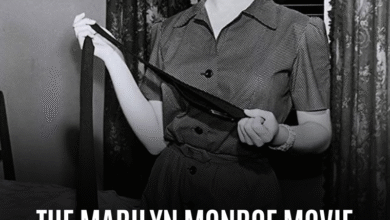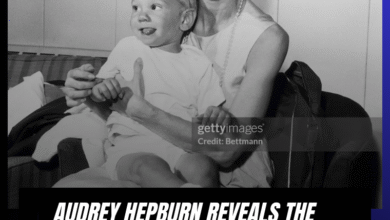The Hidden Struggles Behind Ana de Armas’ Portrayal of Marilyn Monroe: What No One Told You About Her Darkest Fears
OPINION: This article may contain commentary which reflects the author's opinion.
Ana de Armas’ portrayal of Marilyn Monroe in Andrew Dominik’s Blonde sparked both acclaim and controversy, drawing a massive 14-minute standing ovation at the Venice Film Festival and leading to a slew of award nominations. Yet, beneath the praise and accolades, de Armas has revealed a more complex and unsettling side to playing the iconic Hollywood star, particularly when it comes to the explicit and often disturbing nature of the film’s content.
Blonde, a pseudo-biopic, is an unflinching and often graphic portrayal of Monroe’s life, focusing on her trauma, exploitation, and the darker aspects of her public and private persona. The film’s NC-17 rating, given for its sexual content and depictions of sexual assault, made it one of the most talked-about movies of 2022. While de Armas received widespread praise for her performance, she also expressed discomfort with the way her body and intimate scenes would be consumed and dissected by the public.
A Challenging Role for de Armas
When de Armas was cast as Monroe, she was still relatively new to Hollywood. Her breakthrough role in Knives Out had not yet been released, and taking on such a high-profile character was an immense challenge. Speaking to Variety, de Armas shared the difficulties of embodying the role of a woman whose life was marked by immense pain, public scrutiny, and exploitation. As a Cuban actor whose first language isn’t English, she had to work hard to adopt Monroe’s voice and mannerisms, with her acting coach feeding her lines during her audition and restricting her from using any semblance of rage during her portrayal.
But it wasn’t just the role’s complexity that disturbed de Armas—it was the unsettling nature of the explicit scenes, particularly the ones involving nudity and sexual assault. The film’s portrayal of Monroe in such graphic terms echoes the very exploitation she suffered throughout her career, but this time, the camera was not just watching; it was framing and highlighting her pain for a modern audience.
The Anxiety of Being Seen
De Armas’ primary concern was not about the nudity itself but the way it would be consumed. She admitted to feeling disturbed by the potential for her nude scenes to go viral, acknowledging the uncomfortable reality that the internet would likely seize upon these intimate moments, distorting them outside the context of the film. “I know what’s going to go viral, and it’s disgusting. It’s upsetting just to think about it. I can’t control it; you can’t really control what they do and how they take things out of context,” she confessed. This mirrors the way Monroe’s nude photos were often taken without her consent or control, a fate that seems to echo through time for both women.
This anxiety about her portrayal raises the question: why would de Armas choose to participate in a film that so explicitly recreates the very exploitation that Monroe herself faced throughout her career? According to de Armas, it wasn’t the nudity that caused her second thoughts, but rather the reality of how these scenes would be perceived and circulated after the film’s release. In the end, the actor’s concerns seemed to center on the potential for these intimate moments to become fodder for public consumption, stripped of their artistic and narrative context.
Fame and the Fear of Being Objectified
De Armas’ unease with her portrayal of Monroe also ties into her broader discomfort with the type of fame that focuses on the person rather than the work. The actress has been open about her disdain for the paparazzi and the invasive nature of celebrity culture. During her early years in Madrid, she was relentlessly followed by the press, a situation that only intensified when she became involved with Ben Affleck. For de Armas, fame should be about recognition for her craft, not her personal life or physical appearance.
“I have never been someone that wants any attention that’s not about my work,” she explained. “So when the attention is not about my work, it is upsetting, and it feels disrespectful, and it feels inappropriate, and it feels dangerous and unsafe.” This mindset, it seems, makes her even more vulnerable to the dark side of Blonde—a film that unearths the trauma and vulnerability that Monroe experienced, but also one that could lead to a repeat of the same objectification she endured in real life.
De Armas and Marilyn: A Perfectly Tragic Connection
Interestingly, de Armas’ anxiety over her portrayal of Monroe brings her closer to the very essence of the character she is playing. Monroe was a woman relentlessly scrutinized and objectified during her lifetime, a fate that continues to haunt her legacy today. The constant dissection of her life, her body, and her choices echoes in the way the media treats contemporary female stars, including de Armas herself. The parallels between their experiences—though separated by decades—make her casting in Blonde feel almost inevitable. In some ways, de Armas’ discomfort with fame and objectification aligns her more closely with the tragic figure of Monroe, allowing her to channel that vulnerability into a nuanced and powerful performance.
Ultimately, Blonde serves as both a tribute to and a critique of Monroe’s life, shedding light on the exploitation she faced while simultaneously perpetuating it. For de Armas, the role was undoubtedly a transformative experience, but it also revealed the darker side of fame and the fine line between artistic expression and personal violation. The film’s success in capturing this tension is a testament to de Armas’ skill as an actor, but also a reminder of the price that comes with being in the public eye—a price that Monroe paid long before her death, and one that continues to affect women in Hollywood today.



